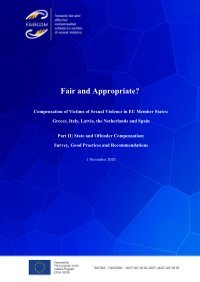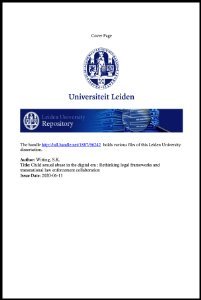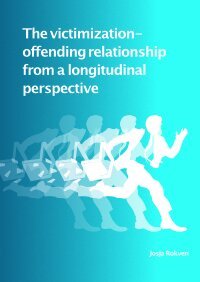By Ruben Timmerman, Arjen Leerkes, and Richard Staring
Across Europe, irregular migrants experience considerable difficulty obtaining basic access to justice, protection, and services across a wide range of areas. The structural exclusion of irregular migrants from the integration strategies of European Union (EU) Member States serves in many situations to limit the full exercise of their basic rights, including in particular the right of an individual to safely report to the police if they have been a victim of or witness to crime.1 In recent years, however, efforts have been made to ensure that irregular migrants within Europe are guaranteed equal access to justice and basic rights should they fall victim to crime. Perhaps most notably, Directive 2012/29/EU of the European Parliament and of the Council of 25 October 2012 establishing minimum standards on the rights, support and protection of victims of crime (hereinafter, Victims’ Directive), which entered into force in 2015, sets out to ensure that the rights of all victims of crime are protected, regardless of nationality or residence status.2 Among other things, the EU Victims’ Directive signifies—at least on paper—the inclusion of irregular migrants within the wider purview of victims’ rights. However, there remain significant challenges and barriers to access to justice and rights for irregular migrant victims of crime within Europe, and there is much work still to be done in effectively realising the vision set out by the EU Victims’ Directive. In particular, it has long been observed by human rights observers, scholars, and practitioners in the field of migration that irregular migrants are often hesitant or unwilling to contact or interact with law enforcement authorities to report crime, either as victims or as witnesses, out of fear of arrest or deportation.3 As a result, these irregular migrants are unable to exercise their basic rights to necessary services, protection, and justice, and are often more vulnerable to perpetrators who are able to exploit their reluctance to report crime. Moreover, the lack of opportunity for irregular migrants to safely report crime results in a lack of crucial intelligence about criminal activity for law enforcement, and significantly reduces authorities’ insight into crime and public safety issues in their communities. As a result of these challenges, both in the United States and across Europe innovative and diverse initiatives have been developed—particularly at the local level—to promote ‘safe reporting’ of crime among irregular migrants, and in turn to ensure greater access to justice for victims.4 In particular, many localities have developed what are commonly referred to as ‘firewall policies’.
Oxford, UK; COMPAS, Global Exchange on Migration and Diversity, 2019. 46p.





















